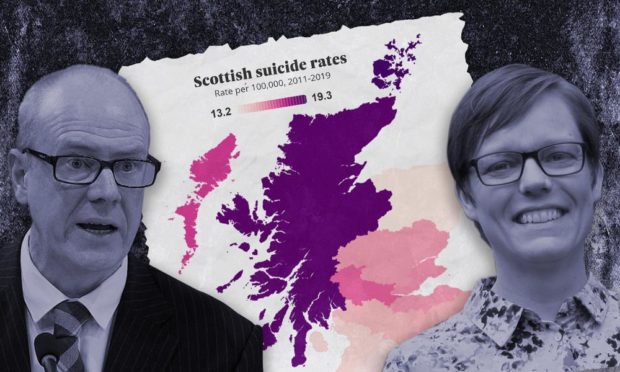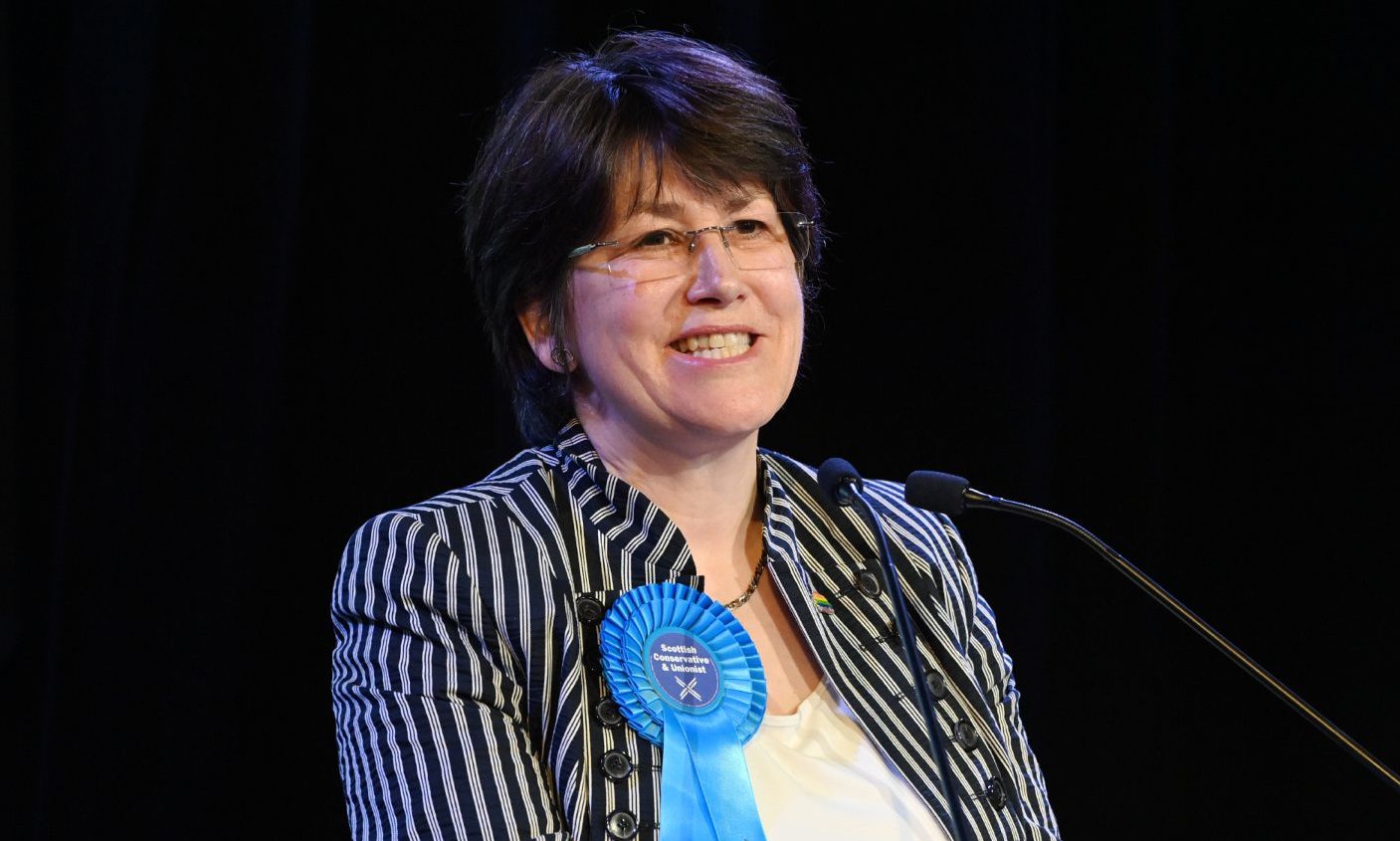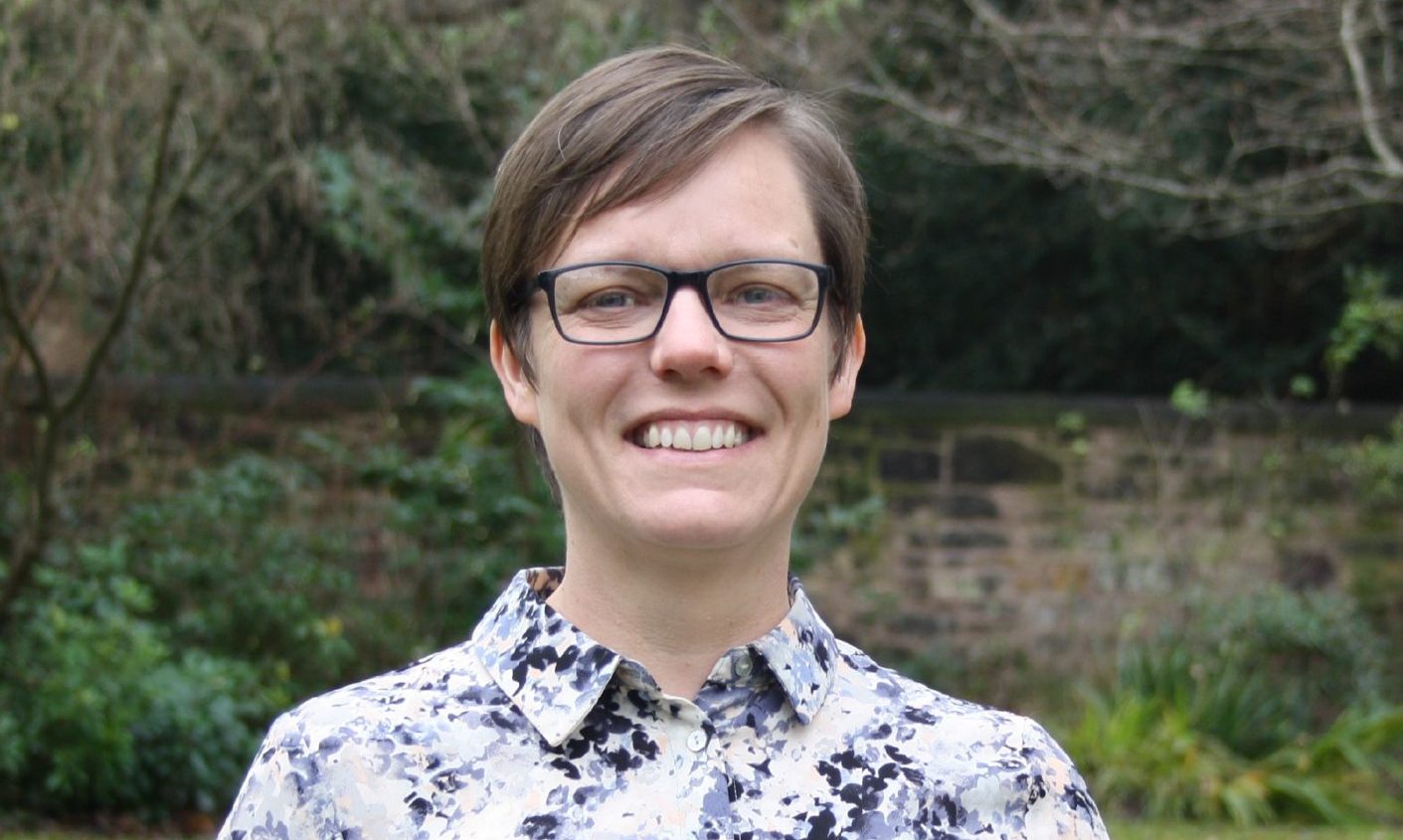Suicide prevention should have a greater priority in the workplace, it has been said, after a “significant” divide was uncovered between the Highlands and Grampian.
New data, published by Public Health Scotland (PHS), has prompted calls for companies to implement the likes of mental health first-aiders as standard.
It showed that, between 2011 and 2019, 6,798 people took their own lives across Scotland.
Just under three-quarters were male, while almost half were aged between 35 and 54.
Additionally, two-thirds were in employment at the time of their death.
Regional variation
The PHS report on the figures noted NHS Grampian had a “significantly lower” suicide rate than the Scottish average, with the Highlands figure “significantly higher”.
Across the north-east, there were approximately 13.2 deaths by suicide per 100,000 residents, compared to 18.9 further north, and 14.2 for the country as a whole.
Orkney was the only area with a higher figure, at 19.3.
Health bosses say the reasons for this could be wide-ranging – involving social and economic circumstances, or differences in culture.
Marital status, occupation and deprivation levels could also play a role.
The information has all been stored in the Scottish Suicide Information Database (ScotSID) – one of the “most extensive” projects of its kind in the world.
By gathering these details on such a large scale, it is hoped any findings can be used to develop new government policies and help save lives.
The stats show that almost three-quarters of people who died from suicide were male, with an average age of 44. For women, it was 45.
When combining the data with information from the 2011 census, health experts found that people who were single or divorced were more likely to be affected.
The proportion of single people who died – 54% – was much larger than the 35% of single people in the general population.
This meant they were 1.5 times more likely to be involved, with the ratio rising to 1.7 for people who were divorced or had their civil partnership dissolved.
Rural and deprived areas
According to the data, PHS said there is an “almost linear” association between people who live in deprived areas and suicide rates.
When looking at the most-deprived parts of Scotland, there were around 22 deaths from probable suicide per 100,000 people.
The rate in the least deprived areas was approximately three times lower.
If you need someone to talk to, we listen 💚 pic.twitter.com/RRaw9dCKZc
— Samaritans (@samaritans) May 21, 2021
The data also showed the rate in parts of Scotland classed “accessible rural” was 12.8 per 100,000.
When considering “very remote” rural towns, this rises to 19.7
The PHS report warned there is a risk of “over-interpreting” any divide between urban and rural areas, but added: “Nevertheless, it is possible that poor access to services and stigma may have a measurable impact on vulnerability and service response in remote rural areas.
“While the drift of people with mental health problems to major cities may account for (some of) the higher risk in urban areas.”
Focus on workplaces
Of the 6,798 people in the “ScotSID cohort,” 88% were of working age.
Almost 30% were unemployed, while 3% were students.
The database has allowed PHS to identify each person’s job at the time of their death, combining them into larger occupational categories.
Those in the skilled trades – such as carpenters, gardeners and mechanics – comprised just under one-quarter of all the deaths by suicide.
“Elementary occupations,” described as involving simple and routine tasks using hand-held tools and physical effort, amounted to 16.5%.
With the majority of people employed at time of death, PHS says the figures serve as a “timely reminder” that efforts need to focus on workplaces.
“Effective suicide prevention action is required to raise employers’ awareness of work-related threats to mental health and to promote positive mental health in the workplace,” the report said.
“There is good evidence that improved occupational health in the workplace can reduce sickness absence, recognise mental illness earlier, and perhaps address some of the factors that may increase suicide risk.”
Scottish Conservative north-east MSP and shadow minister for employment and fair work, Tess White, spent more than 30 years in human resources.
She described the stats as “heart-breaking” and said: “Mental health in the workplace shouldn’t be a hidden issue and is a big topic that needs to be talked about more.
“These devastating figures highlight the need to make mental health first aid part of the process in workplaces.
“In doing so, there is a greater chance of lives being saved and lives being changed for the better.”
Charities ready to help
Support charity Samaritans said the new figures are “crucial” for understanding the complicated topic of suicide.
It operates a free 24-7 phoneline, available by dialling 116 123, and an email service via jo@samaritans.org.
Executive director Rachel Cackett said: “This data sheds greater light on the inequalities surrounding suicide risk before the pandemic struck.
“Even pre-Covid, those living in the most deprived communities in Scotland were around three times more likely to die by suicide than those living in the most affluent communities, while we continue to see significant variations in rates of suicide between regions in Scotland, for example in the Highlands and other remote, rural locations.
“There is, as yet, no evidence of a rise in suicide rates since 2020, but some of the factors which can impact suicide, such as economic inequality and isolation, are a concern.”
Last week First Minister Nicola Sturgeon reshuffled her cabinet, appointing Aberdeen Central MSP Kevin Stewart the minister for mental wellbeing, with responsibilities including mental health, dementia and suicide prevention.
SAMH, the Scottish Association Of Mental Health, has urged the Scottish Government to continue making the topic a “priority area” in the months to come.
Director of influence and change, Jo Anderson, said: “Today’s report plays an important role in helping us better understand who may be at risk of suicide.
“Suicide is a complex issue and while it’s hard to be definitive about the reasons for variations in different areas, factors such as gender, age and, crucially, deprivation levels can have an impact.
“We know that access to support and suicide prevention training are integral in empowering our communities with the confidence to come together to prevent suicide: That’s as essential in workplaces, as in other parts of society.”
Mental Wellbeing Minister Kevin Stewart said: “Every suicide is a tragedy and we are working hard with our partners to reduce suicide deaths in our communities.
“There are a range of complex factors which can contribute to people contemplating suicide, including stressful life circumstances.
“We are working with our National Suicide Prevention Leadership Group (NSPLG) on identifying preventative actions targeted at those population groups who are at increased risk of suicide.
“The NSPLG recently published guidance on local suicide prevention planning which will support communities as they continue to develop responsive, local services and support.
“In partnership with the National Rural Mental Health Forum, we are also working to ensure rural communities have equal and timely access to mental health support and services.
“We will continue to support NHS Boards to share good practice, including how they promote digital mental health services.”



